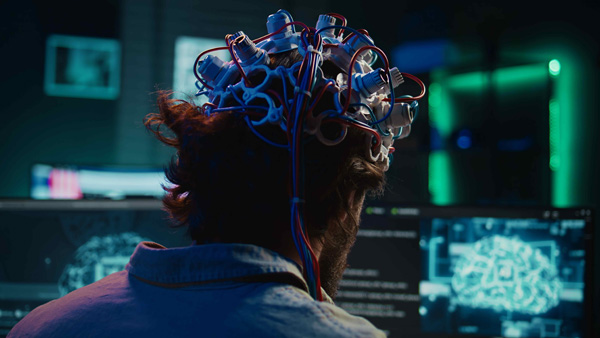Image by Freepik
The advent of organoids and organs-on-chips has revolutionized biomedical research, offering unprecedented opportunities for disease modeling, drug discovery, and personalized medicine. These innovative technologies bridge the gap between traditional in vitro cell cultures and in vivo animal models, providing more accurate and functional representations of human tissues and organs. This article delves into the fascinating world of organoids-on-chips, exploring their development, applications, and potential to transform healthcare.
Understanding Organoids
Organoids are three-dimensional (3D) cell cultures derived from stem cells that self-organize into structures mimicking the architecture and function of specific organs. They can be generated from pluripotent stem cells (iPSCs) or adult stem cells and have the ability to differentiate into various cell types, forming mini-organs such as brain, liver, kidney, and intestine.
Development of Organoids: The process of creating organoids involves culturing stem cells in a controlled environment with specific growth factors and extracellular matrix components. These conditions promote the self-organization and differentiation of stem cells into complex 3D structures that resemble their in vivo counterparts.
Applications of Organoids: Organoids have become invaluable tools in disease modeling, allowing researchers to study the mechanisms of diseases like cancer, cystic fibrosis, and neurodegenerative disorders. They also provide platforms for drug screening and personalized medicine, enabling the testing of drug responses on patient-derived organoids.
The Emergence of Organs-on-Chips
Organs-on-chips are microfluidic devices that replicate the physiological functions of human organs. These chips incorporate living cells and tissues into channels lined with microfluidic networks, which simulate blood flow and mechanical forces experienced by organs in the body.
Design and Fabrication: The design of organs-on-chips involves engineering microfluidic channels with precise geometries to mimic the structure and function of specific organs. These channels are seeded with human cells, which grow and form tissue-like structures. The chips can be fabricated using materials like polydimethylsiloxane (PDMS), which is biocompatible and transparent, allowing real-time observation of cellular processes.
Applications of Organs-on-Chips: These devices are used to model a wide range of human organs, including the lung, liver, heart, and gut. They provide insights into tissue-level functions and disease mechanisms that are difficult to capture with traditional 2D cell cultures. Organs-on-chips are also utilized in drug discovery and toxicity testing, offering a more accurate prediction of human responses to new drugs.
The Synergy of Organoids-on-Chips
Combining the strengths of organoids and organs-on-chips has led to the creation of organoids-on-chips, a powerful hybrid technology that enhances the physiological relevance and functionality of in vitro models.
Enhanced Physiological Relevance: Organoids-on-chips integrate the 3D structure and cellular complexity of organoids with the dynamic microenvironment provided by organs-on-chips. This combination allows for the replication of key physiological processes, such as nutrient and oxygen gradients, mechanical forces, and fluid flow, which are crucial for maintaining tissue function and homeostasis.
Advanced Applications: Organoids-on-chips are being used to study complex biological processes and disease mechanisms in greater detail. For example, they enable the investigation of cancer metastasis, immune responses, and organ development. These systems also facilitate high-throughput drug screening and personalized medicine, as patient-derived organoids can be cultured on chips to test the efficacy and toxicity of drugs in a patient-specific manner.
Recent Research Highlights
1. Mitochondrial Transplantation in Acute Disease States:
Focus: Exploring mitochondrial transplantation as a therapeutic option to restore cellular function in injured tissues.
Authors: David F. Bodenstein et al.
Publication Date: 31 May 2024
Source: Stem Cell Research & Therapy
2. Human Hematopoietic Organoids:
Focus: Modeling human bone marrow diseases and evaluating hematopoietic injury and regeneration.
Authors: Keyi Chen et al.
Publication Date: 4 May 2024
Source: Stem Cell Research & Therapy
3. Kidney Organoids from iPSCs:
Focus: Using iPSCs-derived kidney organoids to study renal development and disease mechanisms.
Authors: Ekaterina Pecksen et al.
Publication Date: 3 May 2024
Source: Stem Cell Research & Therapy
Future Directions and Challenges
While organoids-on-chips hold immense potential, several challenges need to be addressed to fully realize their capabilities:
Standardization: There is a need for standardized protocols for the generation and culture of organoids-on-chips to ensure reproducibility and comparability of results across different laboratories.
Scalability: Scaling up the production of organoids-on-chips for high-throughput screening and clinical applications remains a significant challenge.
Integration with Other Technologies: Integrating organoids-on-chips with other advanced technologies, such as biosensors, imaging techniques, and artificial intelligence, can enhance their functionality and provide deeper insights into biological processes.
Conclusion
Organoids-on-chips represent a cutting-edge convergence of stem cell biology, tissue engineering, and microfluidics, offering a powerful platform for studying human physiology and disease. As research in this field continues to advance, these hybrid systems are poised to revolutionize drug discovery, personalized medicine, and regenerative therapies, ultimately bridging the gap between in vitro models and human clinical trials.
References:
[1] Bodenstein, D. F., et al. (2024). Mitochondrial transplantation in acute disease states. Stem Cell Research & Therapy.
[2] Chen, K., et al. (2024). Human hematopoietic organoids: Modeling bone marrow diseases. Stem Cell Research & Therapy.
[3] Pecksen, E., et al. (2024). Kidney organoids from iPSCs: Insights into renal development. Stem Cell Research & Therapy.





Post comments